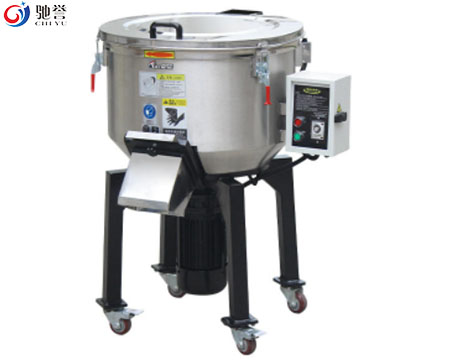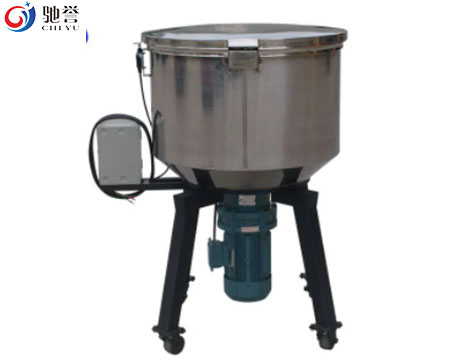Copyright © 2021 Zhangjiagang ChiYu Automation Equipment Co., Ltd. by iwonder.cn All rights reserved. Site Map
In both the cosmetics and pharmaceutical industries, efficiency isn’t just about faster production—it’s about consistent quality, minimal waste, and the ability to scale without compromising formulation integrity. Mixing plays a central role in this equation. Whether it's emulsifying an active skincare serum or dispersing drug compounds into a suspension, the right mixing machine can significantly reduce production time, labor costs, and material losses.
Modern mixing systems do more than blend—they simplify processes, reduce risk, and enable smarter manufacturing. Let’s examine how they support efficiency across these two highly regulated, product-sensitive industries.

Creating stable emulsions quickly is a long-standing challenge in both industries. In cosmetics, creams and lotions depend on finely dispersed oil and water phases to achieve smooth textures and effective delivery of active ingredients. In pharmaceuticals, ointments and gels require uniformity not only for aesthetics but also for accurate dosing.
High shear mixers meet these demands by generating intense turbulence within the mixture. Their rotor–stator mechanisms can break down ingredients into microscale droplets, speeding up emulsification that might otherwise take hours with a traditional agitator. The reduced particle size also enhances product stability and shelf life, which is crucial for brands aiming to extend distribution without preservatives.
In pharmaceutical production, the same principles apply when suspending active ingredients in a carrier gel. The faster these substances are uniformly dispersed, the lower the risk of sedimentation and batch failure. Consistency here doesn’t just improve patient outcomes—it also ensures every dose meets regulatory expectations.
Vacuum emulsifying mixers provide an even more advanced approach by combining mixing, heating, cooling, and deaeration in one sealed system. These machines eliminate air bubbles that can affect viscosity, appearance, and microbial stability. The result is a smoother, denser product with better skin feel or dosage control.
Efficiency gains are meaningless if they don't scale. A formulation that performs well in a 10-liter lab batch must be replicated in 1,000-liter industrial volumes. This transition often introduces problems: layer separation, hot spots, and uneven ingredient distribution.
Well-designed industrial mixers solve this with features like variable-speed motors, wall-scraping blades, and programmable control. For example, a mixer that adjusts speed in real time as viscosity increases ensures proper energy is delivered throughout the batch. Scraper arms prevent material buildup along tank walls, which could otherwise lead to cold zones or ingredient sedimentation.
Programmable logic controllers (PLCs) are central to this. They allow precise control over every stage—time, speed, temperature, and vacuum. A cosmetics manufacturer producing multiple SKUs with slight variations can save significant setup time by storing and retrieving recipes. In pharmaceuticals, where GMP compliance demands strict reproducibility, this reduces deviation and supports robust documentation.
Efficient scaling isn't just about higher volume. It's about translating product quality from bench to factory floor—without loss, lag, or labor increase.
Space in modern production facilities is often limited, especially for contract manufacturers or cosmetics labs operating in urban centers. In such environments, integrated multifunctional mixers provide significant spatial and operational advantages.
A vacuum emulsifying machine equipped with jacketed heating, bottom discharge, and PLC automation can perform multiple stages of production in a single footprint. No need to transfer materials between tanks, wait for pre-heating, or schedule a separate deaeration process. Each skipped transfer reduces the chance of contamination, spillage, or ingredient degradation.
In cosmetics production especially, this flexibility is invaluable. A line that can shift from a hair conditioner in the morning to a facial serum in the afternoon—just by loading a new recipe and performing a short CIP (clean-in-place) cycle—dramatically improves equipment utilization.
Similarly, mobile mixing tanks with integrated agitators can handle pre-dissolution or staging, then roll directly to the primary mixer. These tanks reduce downtime between batches by allowing preparation and mixing to happen in parallel.
Efficient mixing isn't always about high speed. Sometimes it's about reducing the number of hands and steps needed to get from raw materials to a finished, market-ready product.

In both industries, raw materials can be expensive. Whether it’s hyaluronic acid in a serum or a biologically active compound in a topical gel, even small losses can impact profitability. Mixing machines that maximize product recovery directly support operational efficiency.
Vacuum systems are especially effective in this regard. By preventing evaporation during heating, they help retain volatile components and ensure every gram of active is delivered into the final product. Combined with bottom-discharge designs and wall-scraping agitators, they minimize residue left in the tank after mixing.
High shear mixers also prevent waste during formulation. By ensuring complete dispersion of powders and solubilizers, they reduce the risk of clumps that must be filtered or discarded later. This not only improves yield but also shortens the cleaning cycle, since fewer undissolved residues stick to the equipment.
Some equipment models now incorporate real-time viscosity measurement or torque sensors, allowing operators to determine endpoint readiness more precisely. This prevents over-mixing, which can degrade sensitive ingredients or use more energy than necessary.
The bottom line: better yield per batch, less ingredient loss, and cleaner transitions—all contribute to more efficient use of both materials and time.
In high-mix, low-volume manufacturing—common in both cosmetics and pharmaceuticals—changeover speed is crucial. Every hour spent cleaning is an hour not spent producing.
Modern mixing systems address this with sanitary-grade surfaces, CIP systems, and simplified dismantling processes. Internal spray nozzles, polished stainless-steel interiors, and strategically placed drainage points allow for complete cleaning with minimal manual intervention.
This is especially valuable in pharmaceutical settings where cross-contamination can have legal and safety implications. But even in cosmetics, fast and reliable cleaning is essential for quality assurance when switching between formulations that contain strong colors, fragrances, or actives.
Some facilities install separate tanks for allergen-free or fragrance-free product lines, but for many, a clean-in-place system on a universal mixer makes more economic sense. The ability to complete cleaning cycles in 20–30 minutes rather than several hours represents a major time gain over the course of a production day.
In addition, less downtime between batches means fewer scheduling gaps, better use of labor, and improved delivery reliability for customers.
Manual mixing relies on operator experience and timing, introducing variation from one batch to the next. Automation eliminates that uncertainty, making production not just faster, but more repeatable.
Mixing machines equipped with digital interfaces and programmable logic allow recipes to be stored, executed, and verified. This doesn’t just ensure consistency—it enables predictive scheduling. Operators know exactly how long a batch will take, allowing them to stage raw materials and schedule packing accordingly.
Real-time monitoring features—like temperature sensors, speed tracking, and vacuum indicators—alert operators to any deviation. This allows for intervention before quality is compromised, reducing rework and ensuring first-pass yield stays high.
For both industries, investing in automatic mixing equipment is no longer optional—it’s essential for maintaining consistent product quality across dozens of batches. These machines enable smart manufacturing with less supervision, fewer errors, and improved throughput.
The true efficiency comes from not having to stop and correct problems later—because the system is built to prevent them from occurring in the first place.

The modern market demands flexibility. Gone are the days of a single product line running continuously for months. Today, a facility might produce 10–15 different formulations per week—each with different viscosities, ingredient profiles, and handling requirements.
Mixing equipment must keep up. Units with interchangeable mixing heads, variable-speed drives, and programmable batch steps allow teams to adapt quickly. Machines that support both high-viscosity creams and low-viscosity serums remove the need for multiple systems.
In many cases, manufacturers adopt a modular approach—using one control panel to manage several detachable mixing vessels. This setup is ideal for seasonal product lines, clinical trials, or niche batches, allowing production to scale up or down with minimal configuration time.
Efficiency in this context means more than high speed. It means staying nimble without sacrificing control or quality. It means being able to fulfill a boutique order in the morning and switch to a large-scale batch that afternoon—without overhauling the entire production schedule.
Efficiency in cosmetics and pharmaceutical manufacturing depends on much more than mixing speed. It includes intelligent process design, material savings, consistent scale-up, and minimal downtime. With the right mixing equipment—tailored to the application and production environment—companies can reduce costs, improve quality, and accelerate time to market.
For professional consultation or customized solutions, contact us at chiyumixer001@chiyumixer.com.